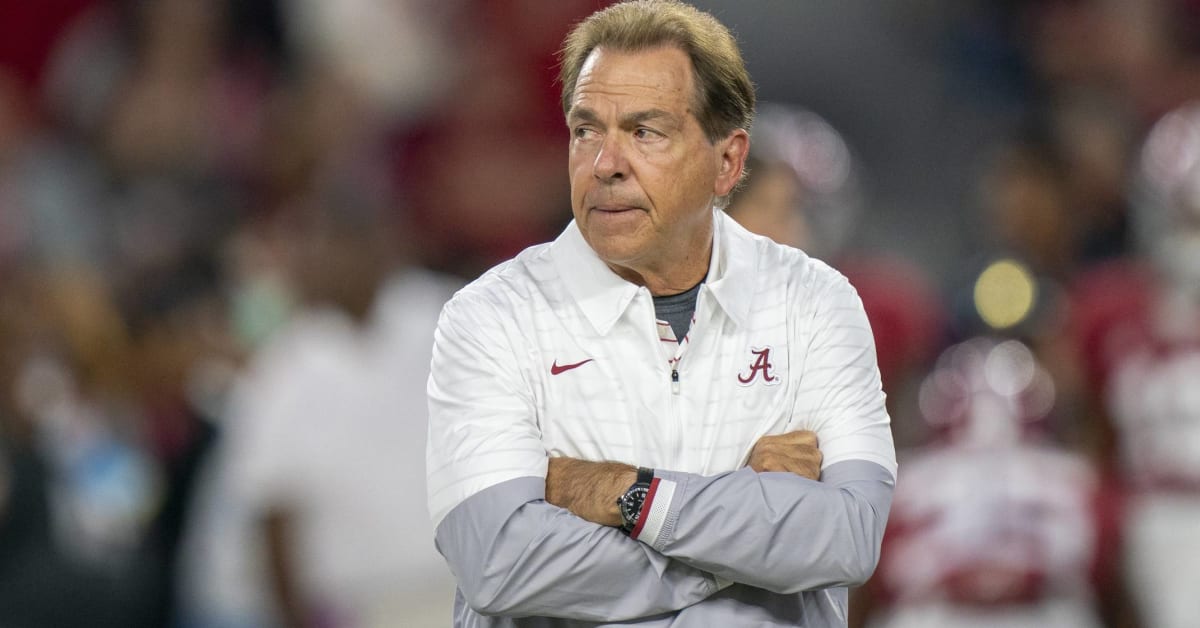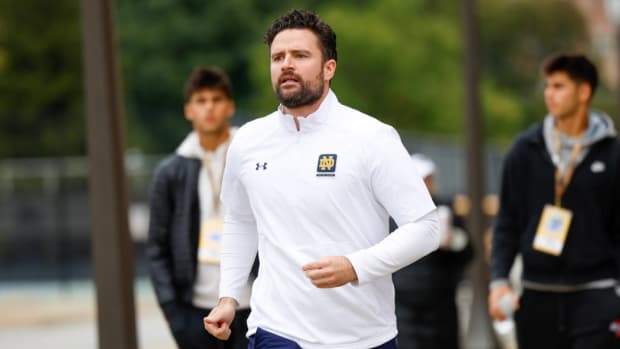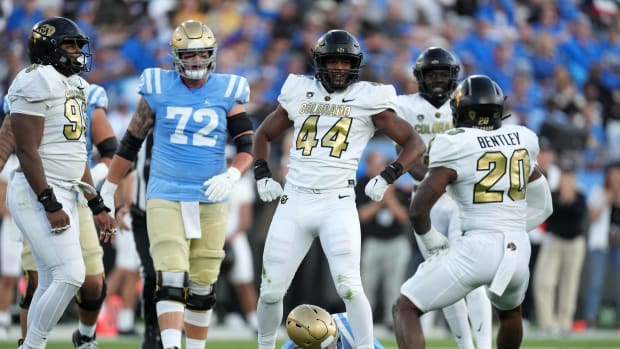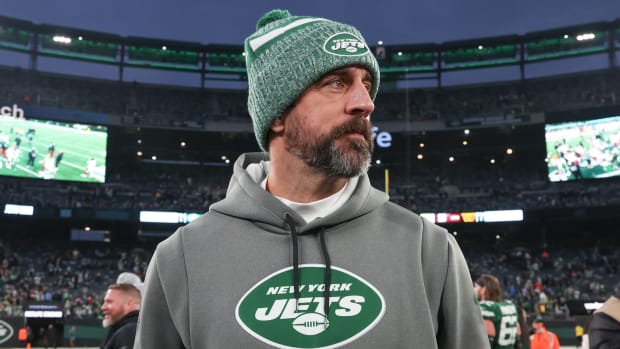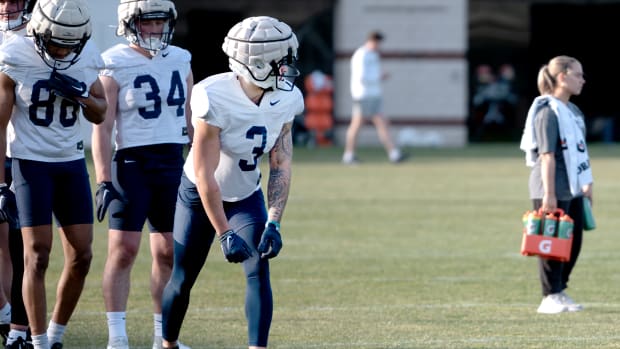Nick Saban Not a Fan of Three Schools the SEC Might Make Alabama Play Under New Format
Nick Saban has never been accused of backing down from a challenge.
For years, the Alabama coach has argued the SEC should play more conference games. He has agreed to beef up the Crimson Tide’s nonconference schedule—starting in 2025, the program will have two Power 5 non-SEC opponents on the schedule each season for a decade. He has been the loudest champion of playing more high-profile matchups more often. That, Saban says, isn’t changing.
However, amid the SEC’s internal debate over a future scheduling format, Saban wants more balance and equity than what has been proposed by league administrators in a nine-game model.
“I’ve always been an advocate for playing more [conference] games,” Saban says. “But if you play more games, I think you have to get the three fixed [opponents] right. They’re giving us Tennessee, Auburn and LSU. I don’t know how they come to that [decision].”
For a year now, SEC officials have been discussing a divisionless eight- or nine-game conference scheduling format with Texas and Oklahoma moving to the SEC from the Big 12 in 2024. In the eight-game format, teams will play one permanent opponent and seven rotating teams. In the nine-game format, teams will play three permanent opponents and six rotating.

Saban and the Crimson Tide missed out on this past season’s College Football Playoff.
Marvin Gentry/USA Today Network
In an eight-game format, choosing one permanent opponent for each team is somewhat noncontroversial, with most having a single primary rivalry. But choosing three permanent opponents can be tricky for a hotly competitive league with some of the country’s biggest brands and most visceral fan bases.
The SEC was expected to choose a team’s three permanent opponents based on primary and secondary rivalries, geographical footprints and, most importantly, balance and parity. The conference is using a 10-year success metric to strike the fairest blend of permanent opponents for each team, Saban says.
“They said they did a 10-year whatever,” the coach says. “Well, some of those years, Tennessee wasn’t as good as they’ve been in the previous 10 years, but now they are as good as they used to be before those 10 years.
“We got three teams and two of them are in the top 10 and the other is in the top 10 a lot,” Saban adds. “Look historically over a 25-year history, and the three best teams in the East are Georgia, Tennessee and Florida. You look historically at 25 years, Alabama, LSU and Auburn are the three best teams in the West. So we’re playing them all.”
Watch college football with fuboTV. Start your free trial today.
The SEC’s exact 10-year metric is unclear. But using league records from 2013 to ’22, the top-half finishers in winning percentage are Alabama (88.8), Georgia (79), Oklahoma (78.2), LSU (63.4), Florida (57.3), Texas (54.3), Auburn (53.6) and Texas A&M (53). The bottom half is Missouri (47.5), Mississippi State (46.3), Ole Miss (44.4), Tennessee and South Carolina (both 41.4), Kentucky (39), Arkansas (25.6) and Vanderbilt (19.7). Big 12 records were used for Oklahoma and Texas. Presumably, those in the top half of the conference over the past decade will play two other teams in the top half and one in the bottom half. Those in the bottom half will play two in the bottom and one in the top half.
To Saban’s point, the Volunteers are on their way up under coach Josh Heupel. Tennessee just completed its best season since 2001, finishing 11–2 with a 52–49 win against Alabama in Knoxville. Though they have struggled over the past decade, the Vols are historically one of the SEC’s elite programs, having won the third-most league football championships (13). Alabama’s proposed other two permanent opponents—LSU and Auburn—have won the fourth-most and sixth-most SEC titles (12 and 8).
“They only did it over 10 years,” Saban says of the metric. “Now you’ve got name, image and likeness, which changes that whole dynamic, because it’s who has the most money to pay players, until they change the rules. I like playing more SEC games. I think it’s good for the game and good for the fans. I think they have a better chance to get the parity right doing the eight games. I’m talking about the balance of who has who.”
However, in the eight-game model, secondary rivalries, such as Alabama-Tennessee, Auburn-Georgia and the revival of Texas–Texas A&M, will be lost on an annual basis. A nine-game format has its issues, too. In the first year of the format, half of the league will have four home games while the other half has five. An uneven home schedule is a prickly subject.
Teams also don’t get a fourth nonconference game that, for many, is a victory over an FCS or Group of 5 team. The format also means that games already scheduled years from now might need changing. Several conference teams have scheduled two Power 5 opponents down the road, including Alabama, and several others may have to pay millions to buy out a previously scheduled fourth nonconference opponent.
And the question of money still looms: Will ESPN give enough additional revenue for the additional inventory of a ninth league game? There is an expectation the network will do so.
SEC athletic directors and presidents are expected to explore the issue more this month and make a decision in the coming weeks. While the league seemed split on the issue last year, many officials are moving more in the direction of a nine-game format.
“The SEC should lean into competing against one another as often as possible in all sports—not just a football deal,” Florida AD Scott Stricklin, a vocal proponent of a nine-game format, told reporters at spring meetings last May. “Those are the ones the fans want to go to or watch on TV. Those are the ones the players want to play.”
